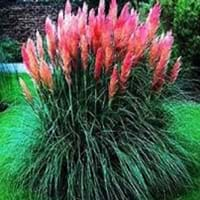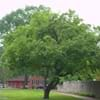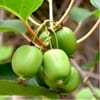Life Span
Perennial
Perennial
Type
Flowering Plants, Fruits, Herbs, Shrubs
Grass
Origin
Australia, South America
South America, Argentina
Types
Adams Elderberry, Black Beauty Elderberry, Black Lace Elderberry, Johns Elderberry, Nova Elderberry
Not Available
Number of Varieties
Not Available
Habitat
Farms, Homesteads, Near organic waste disposal
All sorts of environments
USDA Hardiness Zone
4-8
7-11
Sunset Zone
2a, 2b, 3a, 3b, 4, 5, 6, 7, 14, 15, 16, 17
H1, 3a, 3b, 4, 5, 6, 7, 8, 9, 10, 11, 12, 13, 14, 15, 16, 17, 18, 19, 20, 21, 22, 23, 24
Habit
Upright/Erect
Arching/Fountain-shaped
Flower Color Modifier
Not Available
Bicolor
Fruit Color
Purple, Red
Non Fruiting Plant
Leaf Color in Spring
Green
Green, Gray Green
Leaf Color in Summer
Green
Light Green
Leaf Color in Fall
Yellow green
Green, Gray Green
Leaf Color in Winter
Not Available
Green, Gray Green
Leaf Shape
Compound
long with sharp edges
Plant Season
Early Spring
Spring, Summer, Fall, Winter
Sunlight
Full Sun, Part sun
Full Sun, Partial Sun, Partial shade
Type of Soil
Loamy, Sandy, Well drained
Loam, Sand
The pH of Soil
Slightly Acidic
Acidic, Neutral, Alkaline
Soil Drainage
Average
Well drained
Bloom Time
Early Spring, Spring
Early Summer, Summer, Late Summer, Early Fall
Tolerances
Pollution
Pollution, Salt, Soil Compaction
Where to Plant?
Ground
Ground
How to Plant?
Grafting, Seedlings
Divison, Seedlings, Transplanting
Plant Maintenance
Medium
Medium
Watering Requirements
Requires regular watering, Use Mulches to help prevent water loss during hot and windy weather
Do not water excessively, Keep the ground moist but not water-logged
In Summer
Lots of watering
Lots of watering
In Spring
Moderate
Moderate
In Winter
Average Water
Average Water
Soil pH
Slightly Acidic
Acidic, Neutral, Alkaline
Soil Type
Loamy, Sandy, Well drained
Loam, Sand
Soil Drainage Capacity
Average
Well drained
Sun Exposure
Full Sun, Part sun
Full Sun, Partial Sun, Partial shade
Pruning
Cut or pinch the stems, No pruning needed in the early stages, Prune for shortening long shoots, Prune if you want to improve plant shape, Prune in winter, Prune ocassionally, Remove deadheads
Prune before Winter, Remove damaged leaves, Remove dead branches, Remove dead leaves
Fertilizers
All-Purpose Liquid Fertilizer
10-10-10 diluted liquid fertilizer, All-Purpose Liquid Fertilizer
Pests and Diseases
Canker, Leaf spot, Powdery mildew, Stem spot, Tomato Ringspot Virus
Free of serious pests and diseases
Plant Tolerance
Drought
Drought, moderate salt tolerance
Flower Petal Number
Single
Single
Foliage Texture
Medium
Fine
Foliage Sheen
Matte
Matte
Invasive
Sometimes
Sometimes
Attracts
Birds
Birds, songbirds, Wildlife
Allergy
Diarrhea, Nausea, Vomiting
sneezing
Aesthetic Uses
Not Used For Aesthetic Purpose
Beautification, Informal Hedge, Mixed Border, Ornamental use, Showy Purposes
Beauty Benefits
Not Available
Not Available
Environmental Uses
Air purification
Air purification
Medicinal Uses
constipation, Fever, Heart problems, High cholestrol, HIV/AIDS, Nerve pain, swine flu
No Medicinal Use
Part of Plant Used
Flowers, Fruits
Flowering Tips, Stem, Whole plant
Other Uses
Not Available
Showy Purposes
Used As Indoor Plant
No
Sometimes
Used As Outdoor Plant
Yes
Yes
Garden Design
Not Available
Dried Flower/Everlasting, Feature Plant, Foundation, Hedges, Screening / Wind Break
Botanical Name
Sambucus nigra
CORTADERIA selloana 'Carminea Rendatleri'
Common Name
Elderberry
Pampas Grass, Pink Pampas Grass
In Hindi
Elderberry
Pink Pampas grass
In German
Holunderbeere
Pink Pampas grass
In French
Sureau
Herbe Pampas rose
In Spanish
Saúco
Hierba de color rosa Pampas
In Greek
Elderberry
Pink Pampas grass
In Portuguese
Sabugueiro
Grama de Pampas rosa
In Polish
Bez czarny
Różowy Pampas trawy
In Latin
Elderberry
Pink Pampas grass
Phylum
Magnoliophyta
Tracheobionta
Class
Magnoliopsida
Liliopsida
Order
Dipsacales
Cyperales
Genus
Sambucus
Cortaderia
Clade
Angiosperms, Asterids, Eudicots
Not Available
Tribe
Not Available
Not Available
Subfamily
Not Available
Not Available
Number of Species
Not Available
Season and Care of Elderberry and Pink Pampas Grass
Season and care of Elderberry and Pink Pampas Grass is important to know. While considering everything about Elderberry and Pink Pampas Grass Care, growing season is an essential factor. Elderberry season is Early Spring and Pink Pampas Grass season is Early Spring. The type of soil for Elderberry is Loamy, Sandy, Well drained and for Pink Pampas Grass is Loam, Sand while the PH of soil for Elderberry is Slightly Acidic and for Pink Pampas Grass is Acidic, Neutral, Alkaline.
Elderberry and Pink Pampas Grass Physical Information
Elderberry and Pink Pampas Grass physical information is very important for comparison. Elderberry height is 9.00 cm and width 8.00 cm whereas Pink Pampas Grass height is 240.00 cm and width 150.00 cm. The color specification of Elderberry and Pink Pampas Grass are as follows:
Elderberry flower color: White
Elderberry leaf color: Green
Pink Pampas Grass flower color: Pink
- Pink Pampas Grass leaf color: Green and Gray Green
Care of Elderberry and Pink Pampas Grass
Care of Elderberry and Pink Pampas Grass include pruning, fertilizers, watering etc. Elderberry pruning is done Cut or pinch the stems, No pruning needed in the early stages, Prune for shortening long shoots, Prune if you want to improve plant shape, Prune in winter, Prune ocassionally and Remove deadheads and Pink Pampas Grass pruning is done Prune before Winter, Remove damaged leaves, Remove dead branches and Remove dead leaves. In summer Elderberry needs Lots of watering and in winter, it needs Average Water. Whereas, in summer Pink Pampas Grass needs Lots of watering and in winter, it needs Average Water.





